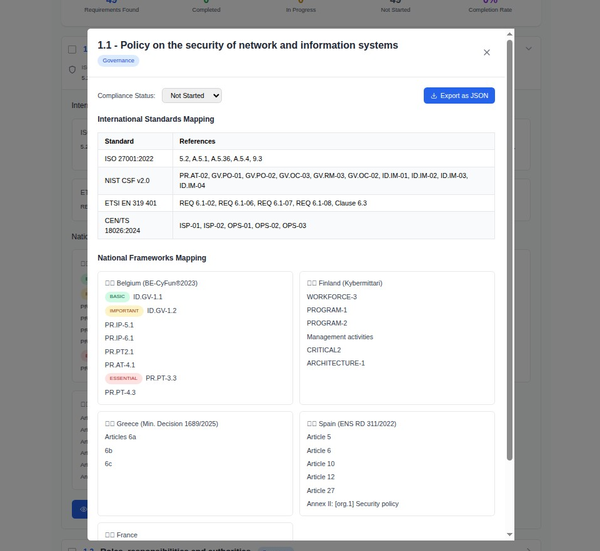Case Study: Evolution of Cybersecurity Laws and Regulations in the United States in 2024

In 2024, the United States saw significant developments in cybersecurity laws and regulations at both the federal and state levels. These changes aimed to enhance breach notifications, protect personal privacy, and address the increasing frequency and sophistication of cyber attacks. This case study explores these developments, highlighting key legislative changes and their impacts.
Federal Cybersecurity Legislation
1. Federal Data Privacy Act
Overview:
The Federal Data Privacy Act of 2024 established comprehensive privacy protections for individuals across the United States. This legislation aimed to harmonize data privacy standards across the states, providing a baseline of protection for all Americans.
Key Provisions:
- Data Protection Requirements: Companies must implement robust data protection measures, including encryption and regular security audits.
- Consumer Rights: Individuals have the right to access, correct, and delete their personal data. They can also opt out of data sharing with third parties.
- Breach Notification: Organizations are required to notify affected individuals within 30 days of discovering a data breach.
Impact:
- Increased Compliance Costs: Businesses, particularly those operating across multiple states, faced increased costs to comply with the new regulations.
- Enhanced Consumer Trust: The law aimed to boost consumer confidence by ensuring consistent data protection standards.
Sources:
State-Level Cybersecurity Regulations
1. California Consumer Privacy Act (CCPA) Amendment
Overview:
California, a leader in data privacy, amended the CCPA in 2024 to further strengthen consumer protections and align with the Federal Data Privacy Act.
Key Provisions:
- Expanded Rights: The amendment expanded consumer rights to include data portability and more stringent opt-out options for data sharing.
- Increased Penalties: Penalties for non-compliance were increased to deter breaches and encourage better data protection practices.
Impact:
- Business Adaptation: Companies operating in California had to update their data handling practices to comply with the new provisions.
- Model for Other States: California’s amendments served as a model for other states considering similar legislation.
Sources:
2. New York SHIELD Act
Overview:
The Stop Hacks and Improve Electronic Data Security (SHIELD) Act in New York was updated in 2024 to include more comprehensive cybersecurity requirements.
Key Provisions:
- Breach Notification: The updated SHIELD Act reduced the breach notification period to 15 days and expanded the definition of private information.
- Security Program Requirements: Businesses must implement a comprehensive security program that includes risk assessments, employee training, and incident response plans.
Impact:
- Rapid Response: The shorter breach notification period forced businesses to enhance their incident detection and response capabilities.
- Broader Coverage: The expanded definition of private information increased the scope of data protected under the law.
Sources:
3. Texas Data Breach Notification Act
Overview:
Texas updated its Data Breach Notification Act to include stricter reporting requirements and enhanced consumer protections.
Key Provisions:
- Immediate Notification: Businesses are required to notify affected individuals and the Texas Attorney General within 10 days of a data breach.
- Free Credit Monitoring: Companies must provide free credit monitoring services to individuals affected by a breach involving sensitive personal information.
Impact:
- Increased Accountability: The immediate notification requirement increased accountability and transparency in handling data breaches.
- Consumer Protection: Free credit monitoring services helped mitigate the impact of breaches on consumers.
Sources:
Trends and Statistics
Increase in Cyber Attacks
Trend:
- The frequency and sophistication of cyber attacks continued to rise in 2024, driven by more advanced tactics and the proliferation of ransomware.
Statistics:
- Total Cyber Attacks: Over 25,000 significant cyber incidents reported in the United States.
- Ransomware Incidents: Ransomware attacks accounted for 40% of all reported cyber incidents.
- Average Breach Cost: The average cost of a data breach in the United States reached $9.44 million.
Sources:
Conclusion
The evolution of cybersecurity laws and regulations in the United States in 2024 reflects a growing recognition of the need for robust data protection and rapid response to cyber threats. Federal legislation, such as the Federal Data Privacy Act, provided a consistent framework for data protection, while state-level regulations, like the CCPA Amendment, SHIELD Act, and Texas Data Breach Notification Act, introduced specific measures tailored to local needs. These developments underscore the importance of comprehensive cybersecurity strategies and the need for businesses to stay ahead of regulatory changes to protect consumer data and maintain trust.
Further Reading:





